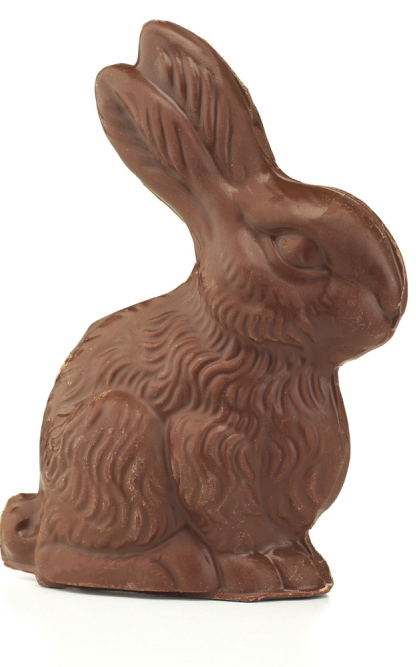I love Easter candy. I love biting the ears off chocolate bunnies and picking out all the red jelly beans. I even like marshmallow Peeps. And, when you’re in front of the Easter display at the supermarket — thinking, “Creme-filled eggs for a dollar? Must buy them all!” — it’s sometimes hard to remember that Easter is about family and tradition and, yes, even some religion, too.
Although many have long decried the increasing commercialization of Christmas, Thanksgiving and other holidays religious and secular, fewer have noted the emergence of Easter as an occasion to splurge. Yet Americans are on track to spend $15.9 billion on the holiday this year, according to the National Retail Federation.
The average consumer (age 18 or older) who celebrates the holiday says she plans to spend an average of $137.46, up 42 percent from a decade ago. (Yes, these surveys of what consumers intend to do are notoriously inaccurate in terms of dollar figures, but they do give insight into actual spending trends.)
What are people buying? Food tops the list in terms of money spent: 85.7 percent of people celebrating will spend an average of $43.18 on their grocery bill. About 40 percent say they will purchase new clothes. The rest of the breakdown basically follows “jelly beans for Tommy, colored eggs for sister Sue,” etc.
There are also a few geographic quirks to how people choose to spend their Easter cash. More consumers in the South, 44.9 percent, say they will spend money on clothing (and bonnets?), while more people in the Northeast are likely to buy flowers, 44.4 percent, and greeting cards, 51.3 percent.
Easter is the second sweetest holiday in candy sales, following Halloween and topping Valentine’s Day. Nine out of 10 consumers who celebrate Easter will spend on sweets this year, for a total of $2.2 billion, or an average of $19.33 per person. (That could get you nine 3-ounce Russell Stover solid milk chocolate bunnies or 90 marshmallow Peeps chicks. Think about it.)
The Easter Bunny has friends in Washington: The National Confectioners Association, the trade group for all things candy, spent $420,000 on federal lobbying in 2012, the Center for Public Integrity reports. The association has its own political action committee, with a list of donors that includes dozens of candy companies. There’s even a partisan edge to an Easter favorite: Jelly Belly donates directly to a super-PAC that supports Republicans.
And so we keep scooping up the sweets. The age bracket that spends the most on average on Easter candy is the 25-year-old to 34-year-old group, at $23.21. This could be because they’re hiding treats for young kids at home, or maybe they’re just young adults with other, higher-alcohol ideas for Easter candy.
According to the National Confectioners Association, more than 51 percent of adult consumers are influenced by holiday displays of seasonal candy in stores (I’m one of them), and 71 percent are influenced by brand name candy. Eighty-nine percent of people who responded to the survey believe the proper way to eat a chocolate Easter bunny is ears first.
And then there’s the candy itself. More than 16 billion jelly beans are made for Easter each year; candy maker Just Born reports Americans will eat more than 600 million Marshmallow chicks and bunnies this year, and Cadbury produces 47 million chocolate eggs each year. You can also buy Easter creme egg wontons, “Scotch” creme eggs (Cadbury chocolate eggs wrapped in sausage meat and seasoning) and “Minecraft Creeps.”
I think I’ll stick with my Peeps.
Send questions/comments to the editors.



Success. Please wait for the page to reload. If the page does not reload within 5 seconds, please refresh the page.
Enter your email and password to access comments.
Hi, to comment on stories you must . This profile is in addition to your subscription and website login.
Already have a commenting profile? .
Invalid username/password.
Please check your email to confirm and complete your registration.
Only subscribers are eligible to post comments. Please subscribe or login first for digital access. Here’s why.
Use the form below to reset your password. When you've submitted your account email, we will send an email with a reset code.